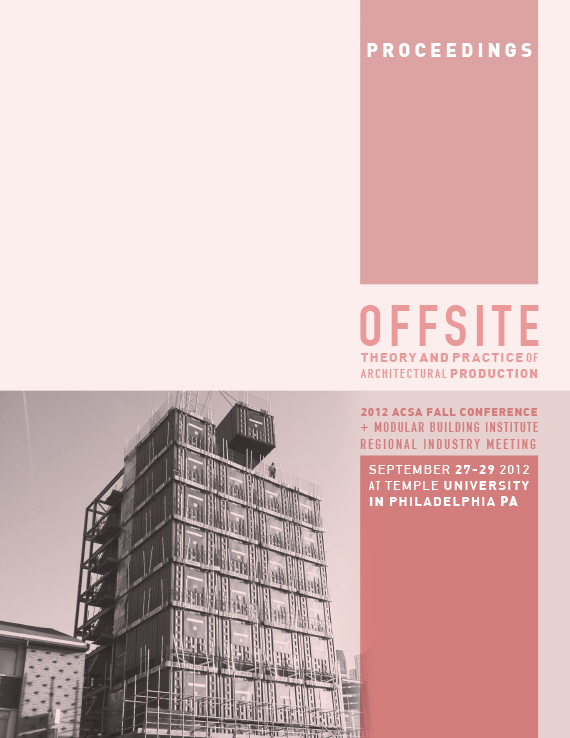Author(s): Joseph Wheeler & Robert Dunay
The promise of factory built housing has risen and receded each decadeover the past century, yet has not broken through to mainstream construction.Economy of scale, lower cost, higher quality and faster production arepredicted attributes that are now overlaid with concerns of sustainabilityand energy use. This project proposes a re-examination of industrialized processesand its applicability to high-density living. By integrating architectureand technology, the goal is to make dwelling sustainable and beautiful.Over the past decade, students and faculty at our university have designedand constructed three net-zero energy houses for the DOE Solar Decathlon.These research initiatives have resulted in considerable expertise in sustainableconstruction and energy efficient dwellings. All three houses were notonly top ranking in the architecture and innovation categories, but also weretop performers in energy production and energy efficiency. As a detachedsingle family dwelling, the most recent of the three houses has fulfilledits challenge with regard to competition and dissemination of informationto the public. However, considering the larger issue of the nation’s energysecurity and use, new strategies are required to address systemic issuesof higher density living and scalable communities. Energy consumption inresidential and commercial buildings accounts for 40 percent of our nation’senergy budget. Buildings typically operate at less than 50 percentoverall efficiency. The housing industry has been reticent to experiment withnew techniques that could make buildings less energy intensive. Housesconstructed by small, local trades have not changed their construction techniquesin decades. The panelized housing industry and prefabricated factorybuilt processes represent some improvement in speed and waste reduction,but overall the results are conservative and energy saving is minimal.This research is an initial attempt to apply lessons learned from previouswork to crack open new ideas regarding residential, high-density constructionand the use of energy in buildings. The goal is to develop and optimizean industrialized building system for low and mid-rise residential units. Theinitial tactic researches the feasibility and viability of a prefabricated buildingmodule. The intention is to merge sustainability, energy optimization,mass production and conservation with market demands and trends.With the corporate partnership of Skidmore Owings and Merrill, our universityresearch group is proposing (currently designing) a mixed use project ona site in south Chicago which will provide a city block design which includesmedium and high density housing. The project is designed as factory builtindustrializedand is proposed to reach near to net zero energy performanceand will utilize fundamental sustainability practices including passive heatingand cooling design strategies and water conservation. The goal for theproposed development in south Chicago is to reach net zero status by utilizingself-generated clean energy and large-scale environmentally sustainableand renewable practices.Our presentation will detail the proposed design including unit plans andinnovative integrated residential technologies, strategies for the industrializedproduction of the units, details of the energy strategies on the highlyefficient complex and details of the mixed use city block design proposed asa near to net zero concept.
Volume Editors
John Quale, Rashida Ng & Ryan E. Smith
ISBN
978-0-935502-85-5

 Study Architecture
Study Architecture  ProPEL
ProPEL 
